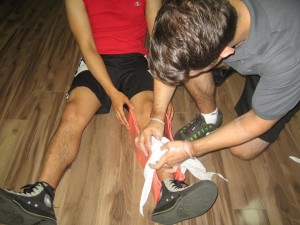Fact Checked
Overview Of Snake Bites
- A toxic (venomous) snake bite is a puncture wound produced by a snake that is able to inject, secrete, or spit toxin into the penetrated skin wound.
- The symptoms of a poisonous snakebite are dependent on the kind of poison(s) secreted into the puncture wound, and also how much poison was secreted into the tissue.
- Symptoms from these poisons are somewhat erratic and can occur rapidly or they may be delayed for hours, which also depends on the type of venom and the quantity absorbed.
- Generally, small kids are more susceptible to snake bites because the quantity of poison absorbed in relation to their smaller body size which can make the poison more powerful.
Overview Of Snake Bites
- Each year thousands of causalities are affected by snakes bites.
- Individuals who reside near the wilderness are more prone.
A toxic (venomous) snake bite is a puncture wound produced by a snake that is able to inject, secrete, or spit toxin into the penetrated skin wound. - Even a bite from a nontoxic snake can cause an allergic response.
Causes Of Snake Bites
Types of Venomous Snakes
- Cobra;
- Water moccasin;
- Rattle snake;
- Coral snake;
- Copper head; and
- Viper.
Symptoms Of Snake Bites
- Tooth marks;
- Inflammation and severe pain in the region of the bite;
- Blood discharge from the injury,
- Burning,
- Diarrhea,
- Extreme sweating,
- Blurry vision;
- Lack of feeling or tingling sensation;
- Increased dehydration;
- Nausea;
- Fever;
- Loss of muscle function;
- Seizures;
- Fast pulse; and
- Weakness, dizzy and pale.
Treatment For Snake Bites
Seek medical assistance as soon as possible. Meanwhile:
- Clean the injury with soap and water.
- Support the affected region.
- Keep the region slightly elevated.
- Apply a cool damp cloth to the affected region.
- Apply a firm dressing above the bite to
i. Stop venom from moving to other parts of the body.
ii.Apply force if there is any bleeding. - Check for a pulse, including breathing and heart rate.
Prevention Of A Snake Bite
- Do not try to destroy the snake.
- If you see a snake, move far away from it.
- While rock climbing or walking through the woods, keep away from tall grass.
- Exercise care while hiking and climbing rocks.
Related Video On Snake Bites
https://www.youtube.com/watch?v=ux5XyZaDE7c

